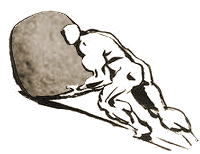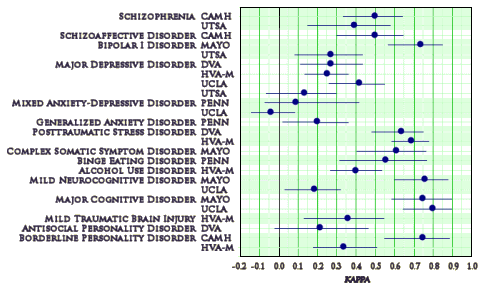 In the last post, referring to the Schatzberg, Scully, Kupfer, Regier letter in respsonse to Dr. Frances, I said, "That’s the low point of this story for me – a school playground bully response that has no place in any serious dialog." But in another way, it was a high point for the DSM-5 Revision enterprise, because after that, everything just seemed to continue to roll down hill.
In the last post, referring to the Schatzberg, Scully, Kupfer, Regier letter in respsonse to Dr. Frances, I said, "That’s the low point of this story for me – a school playground bully response that has no place in any serious dialog." But in another way, it was a high point for the DSM-5 Revision enterprise, because after that, everything just seemed to continue to roll down hill.
For one thing, at around this same time, Senator Grassley’s investigation of prominent psychiatrists who had under-reported their outside income was moving ahead full steam. And with that came the more widespread exposure of the research and marketing misconduct involving academic psychiatrists and the Pharmaceutical industry – along with legal suits that flushed out a stream of incriminating documents from the discovery process. If there had ever been a time for organized psychiatry to eat some humble pie, this was it. But that was not to be. In fact, the President of the APA was, himself, on Senator Grassley’s bad-boy list and one of the authors of the nastygram in response to Dr. Frances – Dr. Alan Schatzberg of Stanford.
I don’t need to say anything about Dr. Frances’ campaign and the overwhelming support it received from outside psychiatry. You read about it in the popular media: Psychology Today, Psychiatric Times, Huffington Post. There is a point I would make about it. Frances’ original complaint was primarily about the process of the DSM-5 Task Force, but the general reaction was more to some of the suggested diagnostic changes, to the exclusively biological focus, and to the suggested motive of the promotion of medications. While I wouldn’t argue with any of those things, there wasn’t much discussion of the actual Revision of the Diagnostic and Statistical Manual of Mental Illnesses. There were many places where the system had glaring problems that were even bigger than the limitations inherent in a descriptive classification. Two that come to mind are Major Depressive Disorder and Generalized Anxiety Disorder that were being used loosely in practice as synonyms for unhappy person and nervous person. My point? The main purpose of the revision got lost is the process.
by David J. Kupfer, M.D. and Darrel A. Regier, M.D., M.P.H.American Journal of Psychiatry 168:672-674, 2011.
by Helena Chmura Kraemer, David J. Kupfer, Diana E. Clarke, William E. Narrow, and Darrel A. RegierAmerican Journal of Psychiatry 2012 169:13-15.
A Pernicious Problem PersistsPLoS Medicineby Lisa Cosgrove and Sheldon KrimskyMarch 13, 2012

By the time the Board of Trustees was given the final draft, many of the really shaky additions had fallen by the wayside [like the Attenuated Psychosis Syndrome] and they’d given up on the dream of adding the biomarkers and biological correlates to the mix [because there weren’t any]. The fact that the parts of the DSM-IV that had needed an overhaul had been ignored was itself ignored. The only thing left of the grand plan from the 2002 book [A Research Agenda for the DSM-V] or the 2009 Commentary [The Conceptual Development of DSM-V] was the addition of "Dimensions" to the diagnostic scheme. The Board of Trustees wisely said no to the proposed version.
"They plotted a revolution, fell to debating among themselves, and in the end overturned very little except their own expectations…" "… many experts inside and outside the process said the final document was not radically different from the previous version, and its lessons more mundane than the rhetoric implied."
But, Mousie, thou art no thy lane,
In proving foresight may be vain;
The best-laid schemes o’ mice an’ men
Gang aft agley,
And lea’e us nought but grief an’ pain
For promised joy!To a Mouse On Turning her up in her Nest with the Plow by Robert Burns
Food for thought:
http://pharmagossip.blogspot.com/2014/03/by-ryan-dagostino-drugging-of-american.html?utm_source=feedburner&utm_medium=feed&utm_campaign=Feed%3A+blogspot%2FDlJuM+%28PharmaGossip%29
http://www.margaretsoltan.com/?p=43588
Steve Lucas
The next edition of ICD, WHO’s international classification of diagnosis, expected out in 2017, is said to be strongly influenced by the DSM. But the evidence, the hard science proving that they are doing more good than harm, is not in sight.
The APA as the Mafia are in the business of serving themselves first and last..
The corruption is corruption, it doesn’t get extra points for good intentions.
Perhaps, what we’re looking at is a general failure of moral reasoning that is endemic and is our weltschmerz? I just started reading Moral Blindness:The Loss of Sensitivity in Liquid Modernity by Zygmunt Bauman and Leonidas Donskis. I finished the introduction last night, which without addressing psychiatry in particular, addressed social ills that the “it” of psychiatry shares with the rest of society. In chapter 1, just now, I ran into this statement by Leonidas Donskis in the dialogue between the two authors :
We tend to replace an eye-to-eye and face-to-face existential situation with an all-embracing classificatory system which consumes human lives and personalities as empirical data and evidence or statistics.
Could they not be talking about psychiatry and the DSM?
I agree with you, wiley, the APA leadership is using a different context for ethical judgment.